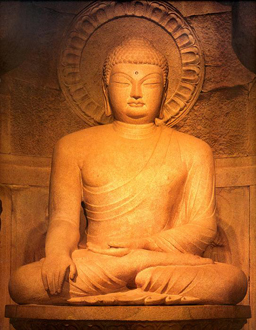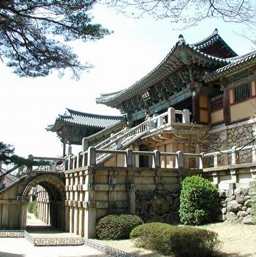

Gyeong Ju Heritage sites
Gyeongju is a major tourist destination for South Koreans as well as foreign visitors. It boasts the 1000 years of Shilla heritage with vast number of ancient ruins and archaeological sites found throughout the city. The city government has successfully parlayed its historic status into a basis for other tourism-related developments such as conferences, festivals, and resorts.
Many Silla sites are located in Gyeongju National Park such as the Royal Tomb Complex, the Cheomseongdae observatory, the Anapji royal pond garden, and the Gyerim forest. Gyeongju National Museum hosts many important artifacts and national treasures that have been excavated from sites within the city and surrounding areas.
Bulguksa temple near Gyeongju.
Much of Gyeongju's heritage are related to the Silla kingdom's patronage of Buddhism. The grotto of Seokguram and the temple of Bulguksa were the first Korean sites to be included on the UNESCO World Heritage List, in 1995. In addition, the ruins of the old Hwangnyongsa temple, said to have been Korean's largest, are preserved on the slopes of Toham Mountain. Various Silla-era stone carvings of Buddhas and bodhisattvas are found on mountainsides throughout the city, particularly on Namsan.
A significant portion of Gyeongju's tourist traffic is due to the city's successful promotion of itself as a site for various festivals, conferences, and competitions. Every year since 1962 a Silla cultural festival has been held in October to celebrate and honour the dynasty's history and culture. It is one of the major festivals of Korea. It features athletic events, folk games, music, dance, literary contests and Buddhist religious ceremonies. Other festivals include the Cherry Blossom Marathon in April, the Korean Traditional Liquor and Cake festival in March, and memorial ceremonies for the founders of the Silla Dynasty and General Kim Yu-sin.


